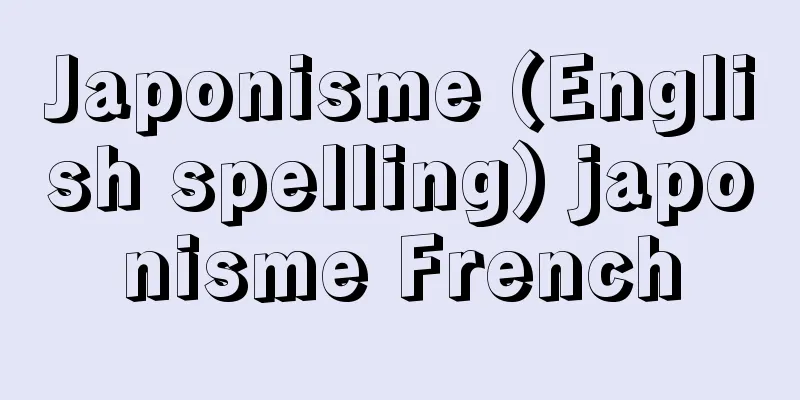Japonisme (English spelling) japonisme French

|
After Japan opened its doors to the West at the end of the Edo period, various works of Japanese art were introduced to the West, and the Japanese interest that arose as a result of this was called Japonisme. The term Japonaisrie was coined to collectively refer to the artworks that were brought there around this time, as well as the works that were created in the West that were inspired by them, but it never caught on. The people who brought Japanese art to the West included Siebold and other members of the Dutch trading post, followed by Alcock, Oliphant, Sato, Chasilon, and others, and in the 1860s it was mainly the British Pre-Raphaelites and French Impressionists and those around them who came into contact with Japanese art. Japonaisrie has countless stages, from simple imitation and passive acceptance to creative assimilation, and the last example is often collectively referred to as Japonisme, but the distinction between the two is still unclear even today. However, it is certain that Japonism was more enduring and richer in content than the Chinoiserie and Turkish tastes of early modern Europe, and if the meaning of the word is broadened, Japonism can be found in the fields of architecture, landscaping, literature, music, and fashion. [Tadashi Ikegami] "Japonisme" by Seiji Oshima (1980, Bijutsu Koronsha) ▽ "Japonisme in Art" edited by Chisaburo Yamada (1980, Kodansha International) [Reference] |Source: Shogakukan Encyclopedia Nipponica About Encyclopedia Nipponica Information | Legend |
|
幕末に日本が開国して以後さまざまな日本美術が欧米に紹介されたが、これに影響されて生じた日本趣味をジャポニスムという。このころに運ばれた美術品、またこれに触発されて欧米でつくられた作品を総称するジャポネズリーということばも生まれたが、定着しなかった。日本美術を欧米に運んだ人々としてはシーボルトらオランダ商館関係者に続いてオールコック、オリファント、サトー、シャシロンらがあり、1860年代に日本美術に接したのは主としてイギリスのラファエル前派とフランスの印象派およびその周辺の人々であった。ジャポネズリーには単なる模倣や消極的な受容から創意あふれる摂取に至るまで無数の段階があり、最後の例を総括してジャポニスムとよぶことが多いが、両者の区別はいまなお明瞭(めいりょう)でない。だが近世ヨーロッパでのシノワズリーやトルコ趣味などより、ジャポニスムのほうが持続的でもあり内容が充実してもいることは確かで、ことばの意味を広くとれば、建築や造園、文学や音楽、モードの分野にまでジャポニスムを認めることができる。 [池上忠治] 『大島清次著『ジャポニスム』(1980・美術公論社)』▽『山田智三郎編Japonisme in Art (1980, Kodansha International)』 [参照項目] |出典 小学館 日本大百科全書(ニッポニカ)日本大百科全書(ニッポニカ)について 情報 | 凡例 |
Recommend
gastrulation
In animals that depend for much of their developm...
Anopheline mosquito
A general term for mosquitoes of the genus Anophe...
Toulon - Toulon (English spelling)
It is a port city and the capital of the departme...
Rhododendron pseudochrysanthum (English spelling) Rhododendronpseudochrysanthum
…[Masaaki Kunishige]. … *Some of the terminology ...
Benefit Level - Kyufusuijun
...However, what makes social security fundamenta...
Berlin Conference
An international conference was held in Berlin fr...
Carl Zeiss Jena [company] - Carl Zeiss Jena
...Population: 102,000 (1995). In addition to mic...
Lockheed Martin Corp.
A major American defense contractor. Its main busi...
Giant earwig - Giant earwig
It is an insect of the order Dermaptera and famil...
Dressing table - Siblings
A stand for hanging a mirror, or a mirror stand. ...
Public Facilities - Ooyakenoshisetu
Facilities installed by local governments for the ...
Omotego [village] - Omotego
A village in Nishishirakawa District, southeastern...
Evren, K.
...After 1978, Turkey was economically bankrupt. ...
Shovelnose
…A general term for marine fish belonging to the ...
Error correction
A method of detecting and automatically correctin...









